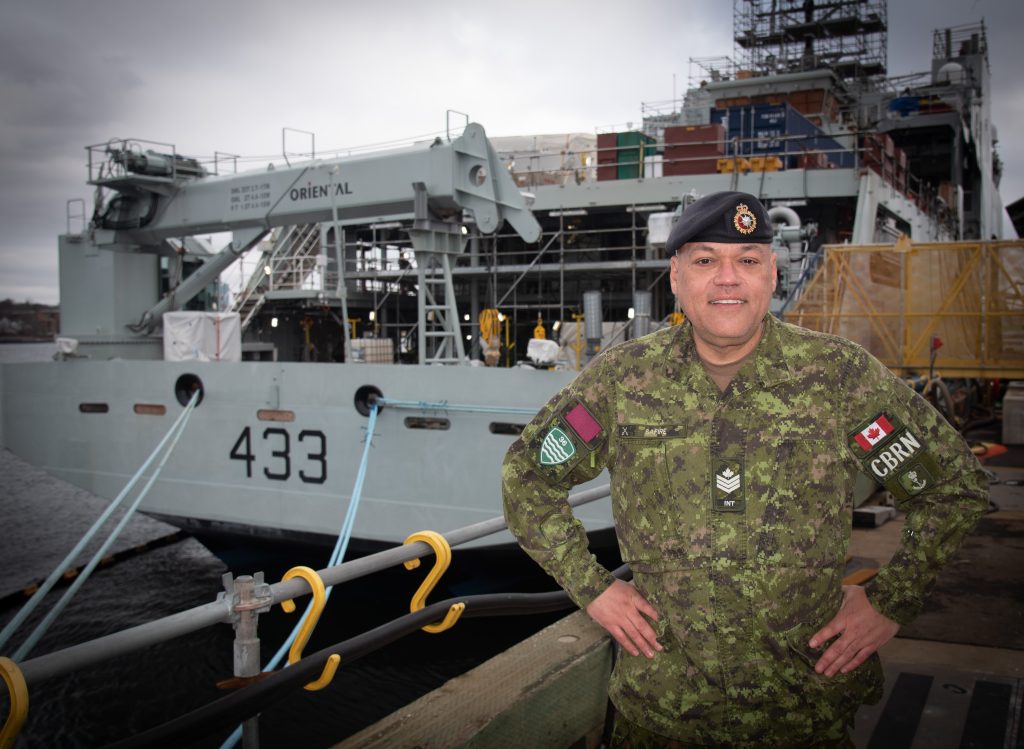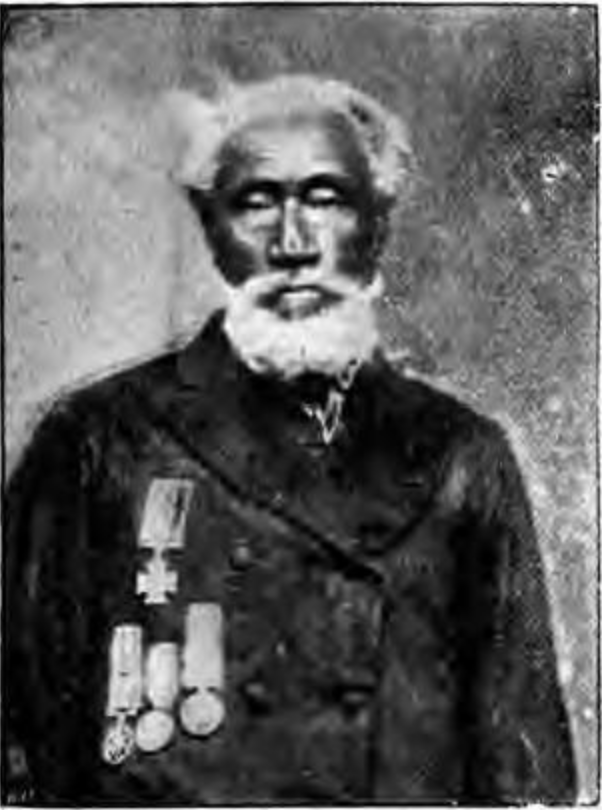
CAPT LANCE WADE
Learning from the past: The future HMCS William Hall
By Joanie Veitch,
Trident Staff
As the Royal Canadian Navy gets ready to welcome the future HMCS William Hall, the fourth Arctic and Offshore Patrol Ship (AOPS), to the fleet, Sergeant Phillip Safire, one of Hall’s living relatives and a military member himself, reflects on the long arc of history and how learning about lesser known stories from the past can play a key role in shaping our future.

“I grew up hearing family stories about William Hall, but I never heard anything about him outside the family — in school, or even when I joined the military. As I got older, the more I looked into it I realized that this is a phenomenal story, one that needs to be known and understood,” said Sgt Safire.
An Intelligence Operator with 36 Canadian Brigade Group (CBG) at 5th Canadian Division, Sgt Safire joined the Canadian Armed Forces in 2003 and is the great, great, great nephew of Chief Petty Officer First Class (CPO1) William Hall.
A Canadian naval hero, Hall was awarded the Victoria Cross for his actions at the Relief of Lucknow, in British-ruled India in 1857. When he received the decoration, on October 28, 1859, CPO1 Hall became the first Black person in the British Empire, the first Canadian sailor and the first Nova Scotian to earn the prestigious medal.
William Hall was born on April 25, 1829 near Horton’s Bluff, Nova Scotia. His parents — Jacob and Lucinda Hall — were emancipated slaves who came to Nova Scotia on a British naval frigate during the War of 1812.
At just 15 years of age, the young William Hall left Nova Scotia to go to sea, serving a short stint in the United States Navy from 1847 to 1849, before joining the Royal Navy in 1852.
“As a young Black man, at that time, there were very few opportunities besides manual labour for him. There would have been nothing else where he could have fulfilled his potential as he was able to do in the military.”
Along with a sense of adventure, Hall may have also been feeling a sense of debt to the British for his family’s freedom when joined the British Navy, Sgt Safire added.
In 1857, when the mutiny broke out in India, then Able-Seaman Hall was a crew member serving in Her Majesty’s Ship (HMS) Shannon and part of the naval brigade brought in to fight the rebellion. On November 16, 1857, as the casualties mounted, Able-Seaman Hall and Lieutenant Thomas James Young were the only two survivors of the naval gun crew, firing until they breached the rebels’ fortification, clearing the way for British troops to enter in what is now known as the Battle of Lucknow.
Eventually promoted to the rank of Quartermaster, the equivalent of today’s Chief Petty Officer First Class, CPO1 Hall retired from the Royal Navy on June 10, 1876. Despite being offered a position at Whitehall in London, he opted to return home to Nova Scotia, to rural living and the family farm.
“To give up such a high-visibility position, one that would have offered him access to power… to me, that speaks to the man’s character, to his humility,” said Sgt Safire. “He had served his country with distinction and honour, but now he wanted a simpler life.”
Celebrated for his accomplishments by his family, Hall received no accolades upon his return to Nova Scotia, except for a brief recognition in 1901, when the Duke of Cornwall and York (later King George V) visited Nova Scotia and Hall stood in a parade with other veterans, wearing his Victoria Cross and other service medals.
Three years later, when Hall died on April 25, 1904, he was buried in an unmarked grave without military honours.
“His family was proud of his service and his military record but there was no public recognition; he died in obscurity, his story unknown,” said Sgt Safire, adding that he also died in poverty, forcing his family to sell his medals to settle his debts.
Recognition of Hall’s efforts came slowly. In 1945, his remains were reinterred in the vicinity of the grounds of the Hantsport Baptist church (until the late 1960s many cemeteries segregated Black people off the main grounds), and in 1947 a commemorative cairn was erected in his honour.
His medals were returned to Canada from England to be shown at Expo ‘67 in Montreal, and in 2010 a commemorative stamp was issued with an illustration of CPO1 Hall wearing his military medals.
In 2015, when the RCN announced the fourth AOPS would be named for CPO1 Hall, his extended family of living relatives released a statement, saying the honour “will certainly bring his incredible story to light — one of extraordinary bravery, perseverance and devotion to duty in the face of nearly unbelievable odds.”
A member of the Defence Visible Minority Advisory group, Sgt Safire said stories such as Hall’s help to shift people’s understanding of our shared history, and the importance of diversity and inclusion efforts going forward.
“People have to reflect on the biases and prejudices of the past, and really look at their own biases and prejudices. We all should do that,” said Sgt Safire. “Hearing stories like that of William Hall is important. To learn about what he did — facing the challenges he must have faced — these are the stories we need to acknowledge, not just here in the military, but Canadian society as a whole.”
The future HMCS William Hall launched from its floating drydock on November 27, 2022 and is expected to be delivered to the RCN later this year.






